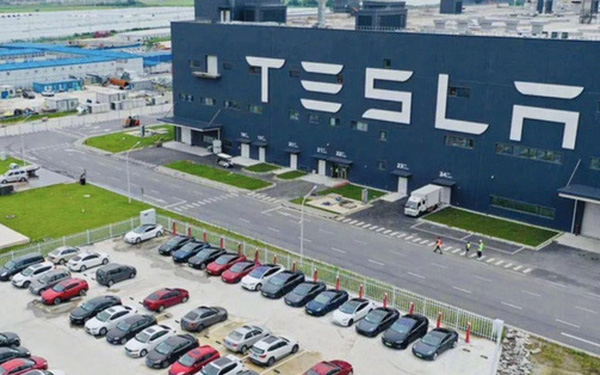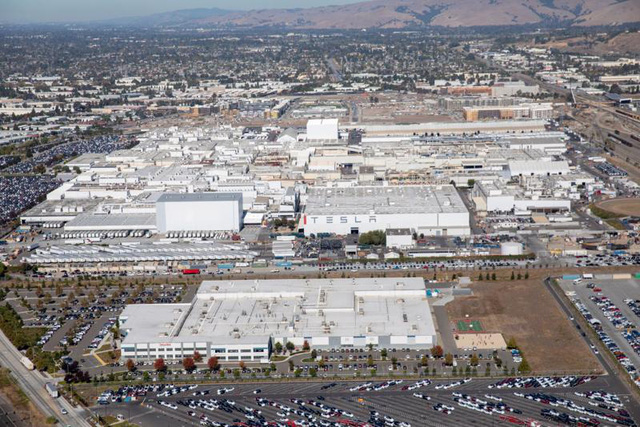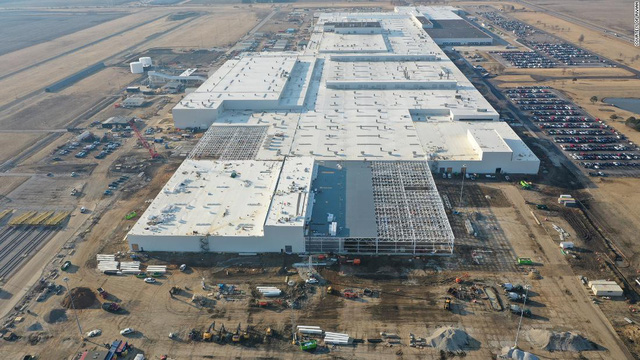On March 29, VinFast and the North Carolina state government (USA) announced the signing of a memorandum of understanding on the construction of VinFast’s first manufacturing plant in the North American market.
Specifically, the project has an investment of up to 2 billion USD (total investment is 4 billion USD in phase 1 (according to information from the White House) and will create 7,000 jobs for local workers. VinFast’s business will be located at Triangle Innovation Point industrial park, Chatham County with an area of about 800 hectares and includes 3 main areas: production and assembly area for electric cars and electric buses; battery production area for electric cars and buses. electric vehicle products and ancillary industrial areas for suppliers.

Vinfast’s expansion of production in the US market will entail fierce competition with other major electric vehicle manufacturers such as Tesla, Ford, Rivian, etc. They have built large-scale factories, high quality and there are many other upgrade plans to strengthen its position in this potential electric vehicle industry.
Tesla
In the early days of Tesla going into mass production, Mr. Musk was mocked for his overconfidence. But now, Tesla’s original plant in Fremont, California has been billed as the most productive North American auto plant in terms of capacity. Ships 8,550 vehicles per week.

The factory is located on a land area of about 150 hectares, of which the usable portion is about 51 hectares – which is quite modest compared to VinFast’s factory scale (800 hectares). Tesla’s electric car factory is one of the most robot-intensive factories in the world. There are 160 specialized robots (specialist robots), of which 10 are the largest robots in the world. In production spaces there is very little human presence.
In 2013, the factory had 3000 employees. Because the workshops have a very large area, workers have to use bicycles to travel in the factory.
Not only that, with the rapid growth of the electric vehicle brand, Tesla also quickly expanded its factory scale and put into operation a Super Factory in 2016 in Nevada with an area of nearly half a million square meters. .
Here, Tesla produces batteries, solar panels, home storage solutions and of course electric cars with the main product being the Tesla 3 model.
In addition to the iconic factory mentioned above, Tesla also has a factory located in Texas with an investment of 1 billion USD, another new super factory opened near Berlin (Germany) with an investment value of 5.5 billion USD. USD, with a capacity of 5,000-10,000 vehicles per week and a super factory in Shanghai (China) with a capacity of about 2,000 vehicles per day.
Tesla is also the world’s largest electric vehicle manufacturer with more than 930,000 vehicles delivered to consumers in 2021.
Volkswagen
Right at the beginning of March, the German car giant Volkswagen Group announced that it had approved an investment worth 2 billion euros ($2.2 billion) to build a new electric car factory.

According to the company’s statement, construction of the new factory will begin as early as spring 2023, and start production from 2026. This new plant will be the site of the mass production of the Trinity model, which is at the heart of Volkswagen’s new all-electric lineup.
When the new plant comes into operation, Volkswagen hopes to shorten the production time of an electric vehicle to about 10 hours, compared with the current 30 hours at the factory in Zwickau in eastern Germany.
The scale of $ 2.2 billion is not too large, but this is just an extension of Volkswagen while the main production activities of the world’s second largest car company are still located at the main factory – considered the largest factory in Germany. with an area of over 6.5 million m2 and is located in Wolfsburg, Germany.
The factory produces 3,800 vehicles per day and ships over 800,000 vehicles per year. The factory hall alone has enough space to accommodate the Principality of Monaco. This is where 4 assembly lines are located for Golf, Touran and Tiguan models. Operating since 1945 and up to now, the factory complex is closed from components to complete a car.
The scale of the Wolfsburg factory complex is so large that the German automaker has to install 55 km of tracks for mini trains to move between areas. The total area of this complex is larger than the principality of Monaco and is where more than 60,000 Volkswagen workers assemble 815,000 vehicles a year. This is also one of the oldest factories in the world when it was built in 1938.
Ford
In September 2021, Ford Motor and Korean battery manufacturer SK Innovation announced an investment $11.4 billion to build an F-150 assembly plant and 3 battery factories in the US to boost electric vehicle production.
Specifically, Ford will spend $7 billion, the largest investment Ford has made in its 118-year history, and SK will pay the rest. The money will be evenly distributed among factories in Kentucky and Tennessee.

The construction of electric vehicle and battery plants in Stanton, Tennessee, and two battery factories in Glendale, Kentucky will create 11,000 jobs. In particular, the battery and assembly complex in Tennessee will be three times the size of Ford’s long-standing Rouge production complex in Dearborn.
Ford said it will build a “massive campus” Blue Oval City, bearing Ford’s elliptical logo, to support production of the next generation of the Lightning model. The mega-factory is expected to be more than 15,000 square kilometers in west Tennessee with a total value of $5.6 billion and will create 6,000 jobs.
In Kentucky, Ford will build another campus, called BlueOvalSK Battery Park, which will be a dedicated battery manufacturing complex for Ford’s expanding electric vehicle portfolio. The land area of more than 7,000 square kilometers will be worth $5.8 billion and is expected to create 5,000 jobs. The site is scheduled to open in 2025.
Rivian
Although just starting to sell cars and reporting small sales, Rivian once surpassed traditional “giants” like General Motors or Ford Motor in market value, valued at up to $ 100 billion. , becoming the second most valuable U.S. vehicle manufacturer, behind only Tesla.
Currently, Rivian has a major manufacturing facility in Normal, Illinois, where it makes electric trucks for Amazon, as well as the first parts for R1T and R1S EVs. The factory created more than 3,000 jobs. The current capacity is 150,000 units per year – equivalent to the expected capacity of VinFast phase 1. The airline plans to increase to 200,000 units per year by 2023.

At the end of 2021, during a press conference at the State Capitol, Rivian executives outlined a plan to build a new factory in Georgia, USA. They plan to employ 7,500 workers at the plant, which could later grow to 10,000. The plant will be built on a large tract of farmland and pine forest, about an hour’s drive east of Atlanta. Rivian plans to build in the summer of 2022 and begin production in 2024 at its plant in Georgia. The American automaker aims to produce 400,000 units a year here.
In addition to the two main manufacturing plants, Rivian also has its own battery system factory in Atlanta, Georgia, USA. The American automaker also plans to build an electric vehicle factory in Europe in the future.